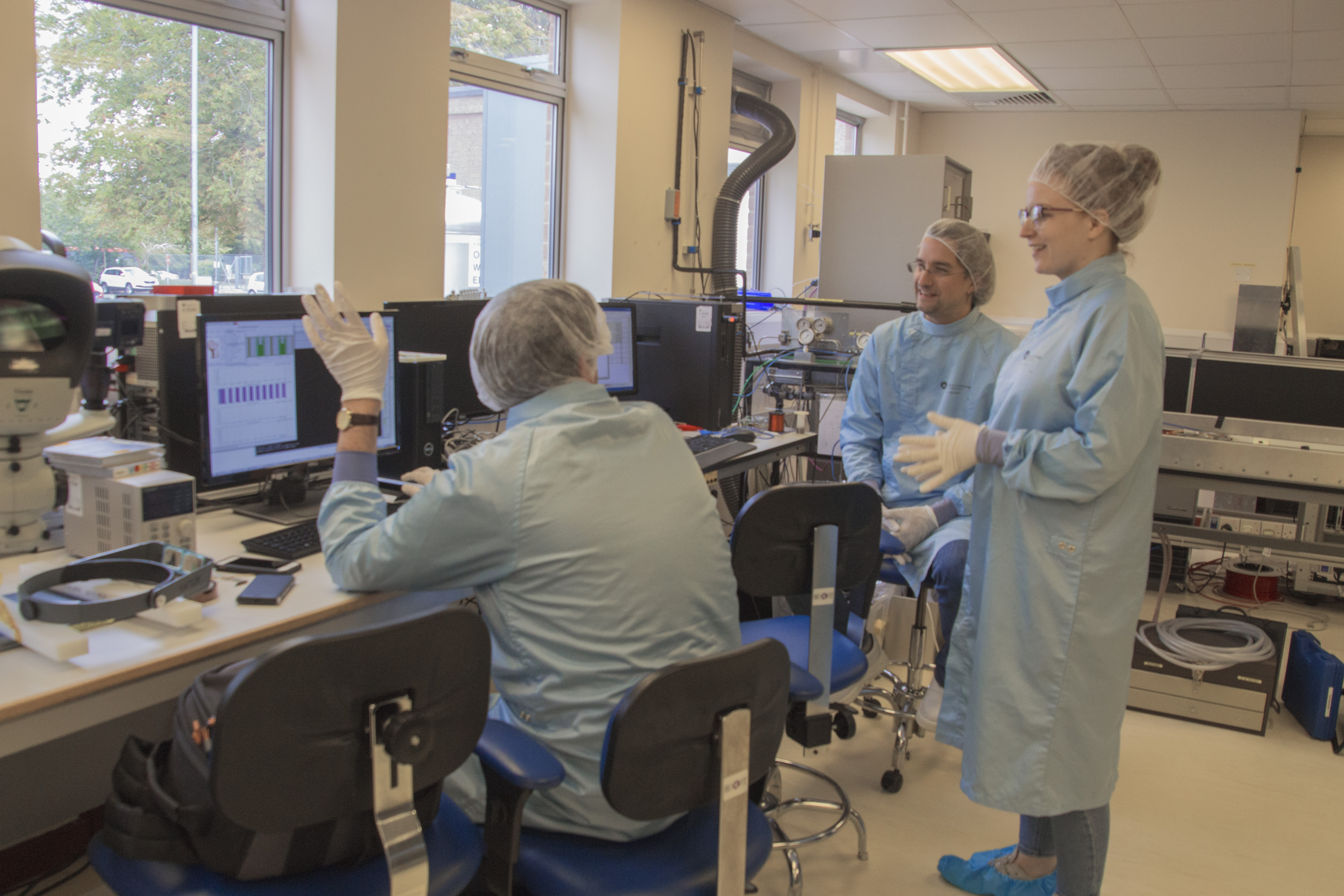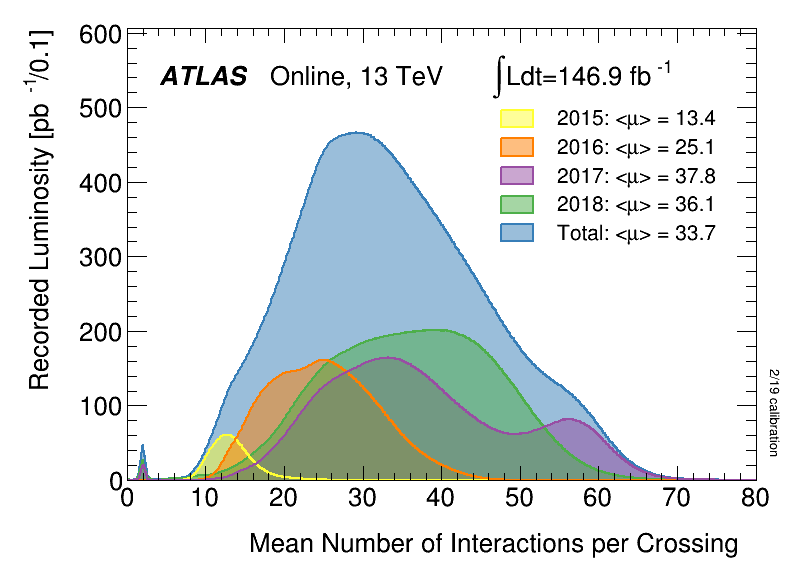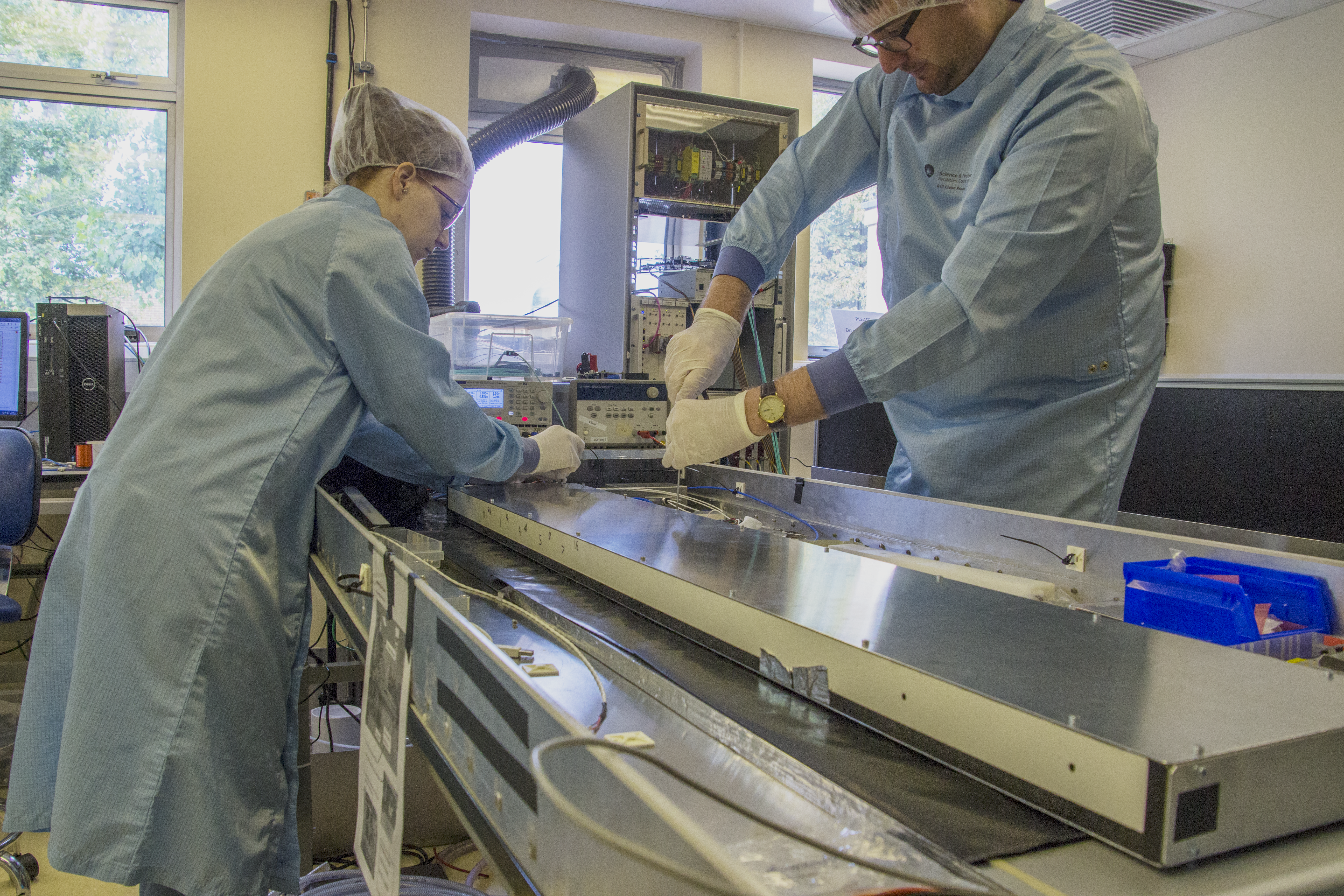The Particle Physics Department at STFC does a large proportion of its work in collaboration with international communities, allowing us to set greater goals and build mutually beneficial relationships simultaneously, making the Institute of High Energy Physics (IHEP) in China the perfect partner.
Emma Buchanan and Matt Kurth from IHEP joined the team in April and May as part of an ongoing international collaboration. IHEP, based in Beijing, aims to have two representatives here at the Rutherford Appleton Laboratory at all times; allowing us to keep close links with China. IHEP has a strong track record dating back to the 1950s and is set to become an even bigger name in the world of particle physics. They are currently making big steps to consolidate their collaboration with the ATLAS Silicon Tracker Community.


The work we do together is predominantly focused on the ATLAS experiment at CERN, which is part of the Large Hadron Collider, the world’s largest and most powerful particle accelerator. It is based at CERN in Geneva and is undergoing a major high luminosity upgrade set to come online in 2026. The higher luminosity (and therefore also higher radiation) means that many of the experiments that make up the LHC, such as ATLAS, will also need upgrading. In addition, since many of the key components that make up the ATLAS experiment have been operating under an already substantial level of radiation since 2008, many are reaching the end of their lifetime. Therefore for the LHC and the experiments to carry on running these will need replacing, but more excitingly it presents the opportunity to simultaneously upgrade to run effectively under the higher luminosity; unlocking even greater potential for the LHC.


The upgrade will allow the LHC to achieve instantaneous luminosities a factor of seven larger than the LHC design (2008) value, resulting in up to 200 proton-proton collisions per bunch crossing, greatly increasing ATLAS’ potential to spot new or rare physics processes. The image below shows the number of collisions made during LHC Run 2 and you can see the average was around 30 so this is quite a step up.

Figure 1 from https://atlas.web.cern.ch/Atlas/GROUPS/DATAPREPARATION/PublicPlots/2018/DataSummary/figs/mu_2015_2018.png
A total of 21 different institutes from across the world are working on the inner tracker for this; with roughly 50% of the work being done by institutes in the US, 40% in the UK and 10% in China. The increase in luminosity means that components need to be able to withstand more radiation whilst giving a faster readout and having a finer granularity; granularity being the scale or level of detail in a set of data - in this context, this means pixels need to be smaller. China joined the project recently, with it also being their first time providing hardware for ATLAS they benefit from being brought up to speed by our team. In working with us we hope they gain knowledge and experience in the field as well as build strong working relationships. In addition, IHEP is in the process of building its own cleanroom, while the cleanroom at Rutherford Appleton Laboratory is well established. In working together, we gain knowledgeable, qualified staff that will return with a positive impression of the work we do here as well as good relations with members of our team and their staff will return with experience in a cleanroom allowing them to put theirs to good use from the moment it is opened.

Figure 2 from https://cerncourier.com/objects/ccr/cern/55/2/19/CCHIG2_02_15th.jpg
Our relationship with IHEP is neither short-term nor new; previously we have worked successfully together on developing CMOS (Complementary Metal–Oxide–Semiconductor) chips – this is generic R&D towards future detectors, rather than focus on any existing/planned detector.


We are also working together on RD50; an international collaboration based at CERN developing new radiation-hard semiconductor devices – something that is essential for the increased luminosity in the LHC. Any experience IHEP gains from this collaboration can be taken back and built upon for their own project, the Circular Electron–Positron Collider (CEPC), a proposed future circular collider which could be built by 2030. The CEPC project started in 2012 after the discovery of the Higgs boson. Electron-positron collisions are cleaner than proton-proton collisions and offer more control over the mass of particles produced. This would allow for very precise measurements of the Higgs boson mass and possibly decays to unknown, invisible particles, which are inaccessible at the LHC. CEPC would be built in a 100km tunnel (much bigger than the 27km LHC) that could then host a proton-proton collider, the Super Proton Proton Collider (SppC). The SppC is planned to start with 12T dipole magnets allowing collisions at a centre-of-mass energy of 75 TeV, going up to 16 T to allow protons to collide at a centre-of-mass energy of 100 TeV - much greater than the maximum energy expected from the LHC upgrade of 14 TeV, with scope to discover heavy new particles if they exist. So far CEPC has signed over 20 MoUs (memoranda of understanding) around the world, while two PPD staff members, Dr Jens Dopke and Prof. Steve McMahon, signed the conceptual design report for CEPC.

From left to right: Jens Dopke (PPD), Emma Buchanan (IHEP) and Craig Sawyer (PPD)
